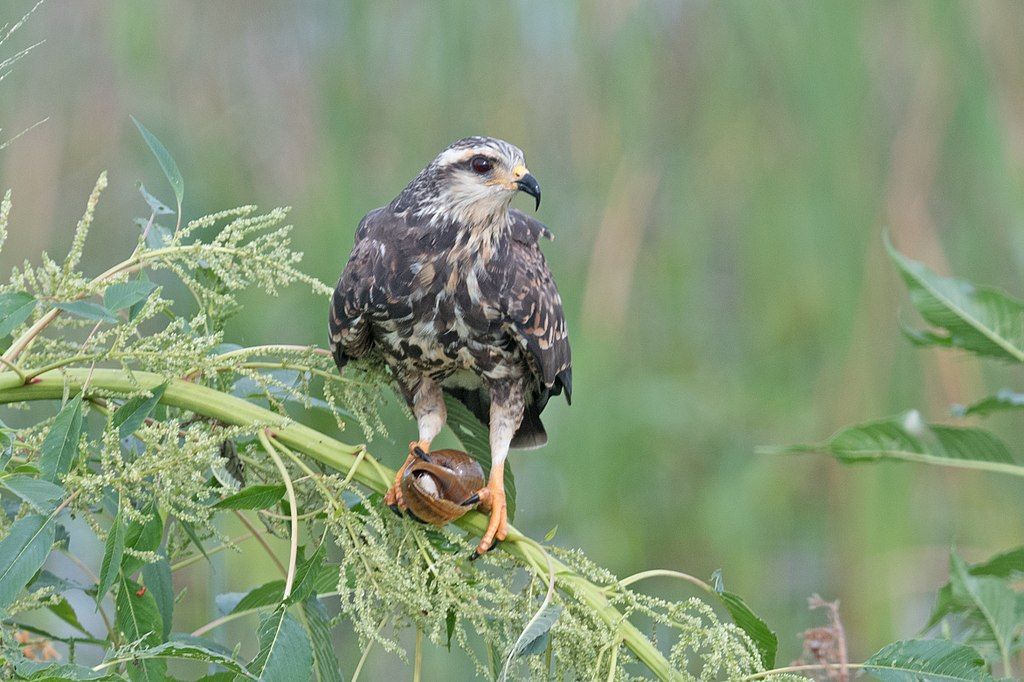
Native from Florida to Argentina, the snail kite (Rostrhamus sociabilis) is a gregarious bird of prey that eats only one thing: freshwater snails in the genus Pomacea. Its beak is specially shaped to do so.
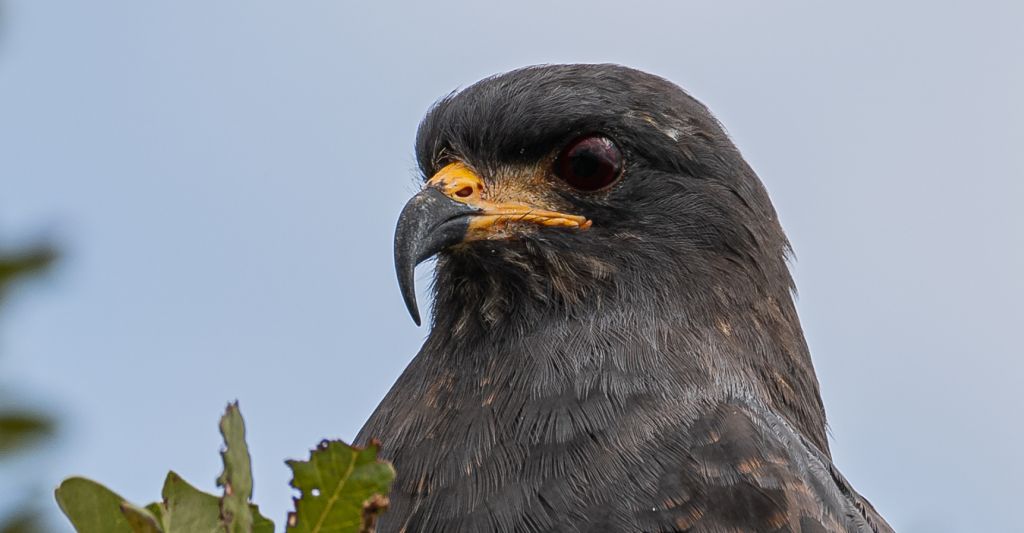
The Snail Kite’s slender, deeply hooked, sharp-tipped upper mandible permits it to cut the columellar muscle of Pomacea snails and remove soft tissues from the shells. The arc of the upper mandible approximates the inner spiral of the snail’s shell.
— paraphrased from Birds of the World, Snail kite account
In the old days before humans took over Florida’s landscape, snail kites ranged over half the state, but we drained and diverted more than 50% of Florida’s wetlands, the snail kite population crashed and was listed as Endangered in 1967. Twenty years ago, from 2000-2007, their population dipped so low that scientists feared they would go extinct in the U.S. Then a curious thing happened. Their food supply changed and the kites changed so they could eat it.
Before this century the snail kite’s main food was the native Florida apple snail (Pomacea paludosa) but an invasive species, the island apple snail (Pomacea maculata), arrived in 2000 and began to spread in Florida’s lakes and water management areas.
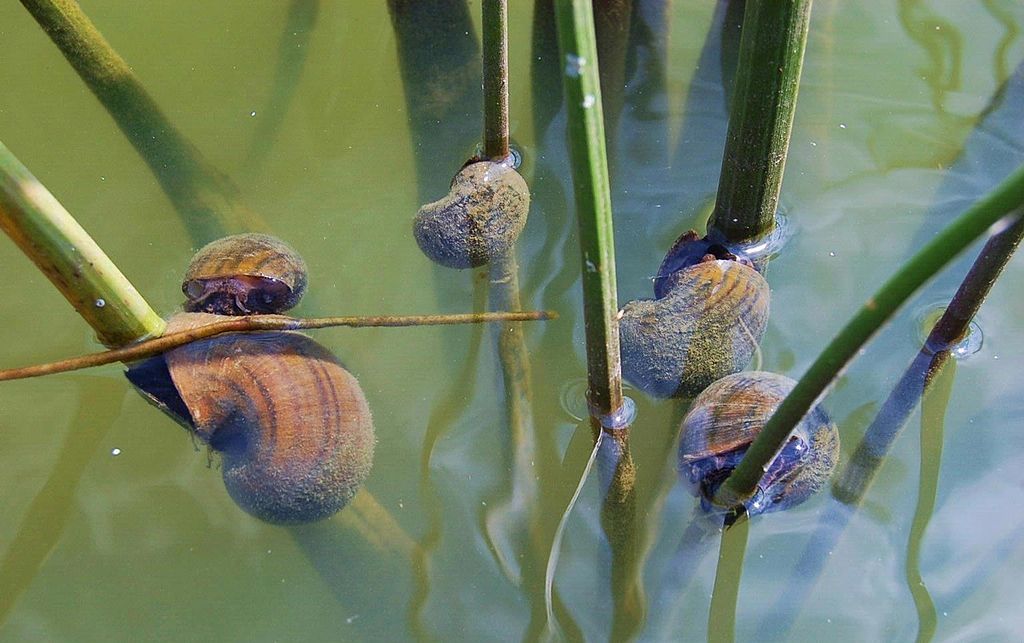
The island apple snail is two to five times larger than the Florida apple snail as seen below. (The white-and-gray bars are each 5 cm.)
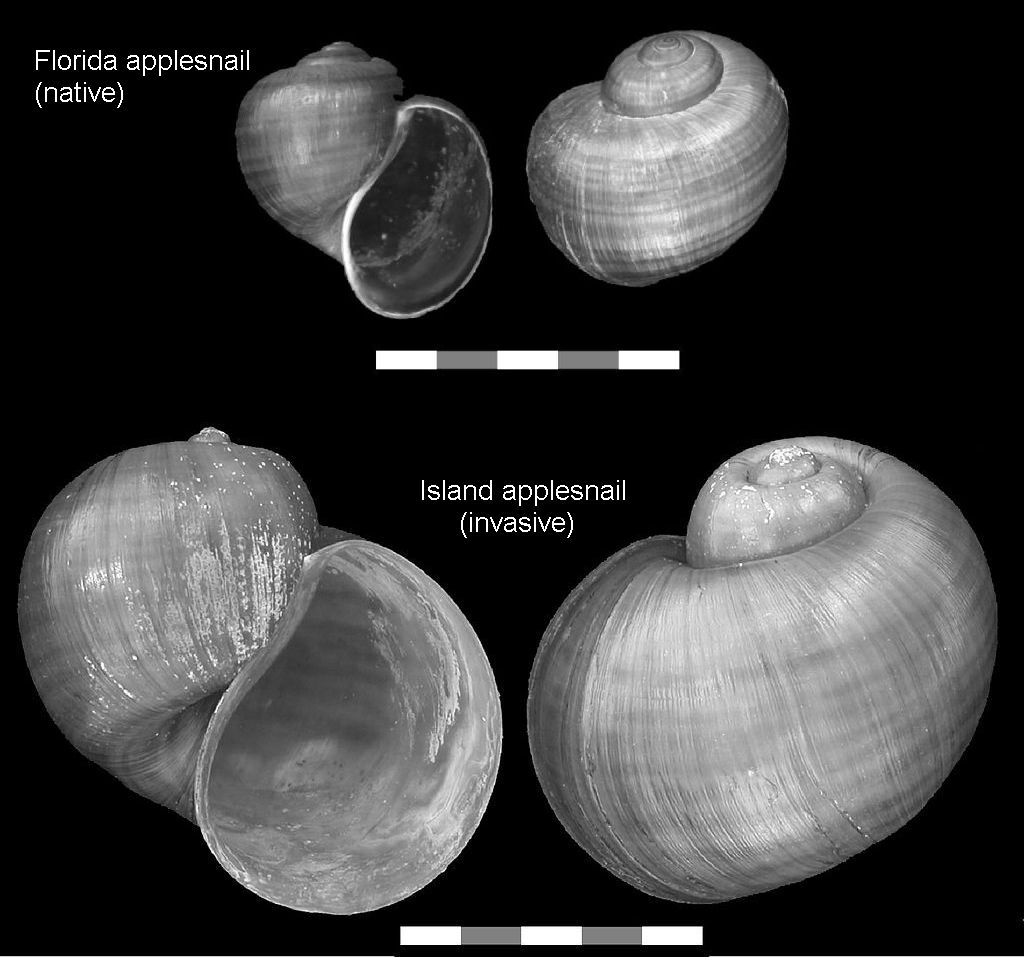
When the island apple snail first arrived in Florida the snail kite population dropped but less than a decade later the population began increasing. Did the birds initially have a tool problem? Were their beaks too short to get at the snail inside the larger shell? A recent study from the University of Florida indicates this was probably the case. Since 2007…
Researchers found that the birds with bigger bills were surviving, and their offspring were inheriting the bigger bills. …
“We found that beak size had a large amount of genetic variance and that more variance happened post-invasion of the island apple snail. This indicates that genetic variations may spur rapid evolution under environmental change,” Fletcher said.
— paraphrased from UF study: Bird evolves virtually overnight to keep up with invasive prey
We think of evolution as a very slow process but for the snail kite it happened quite fast. Those with longer bills survived. Nowadays they easily eat island apple snails.
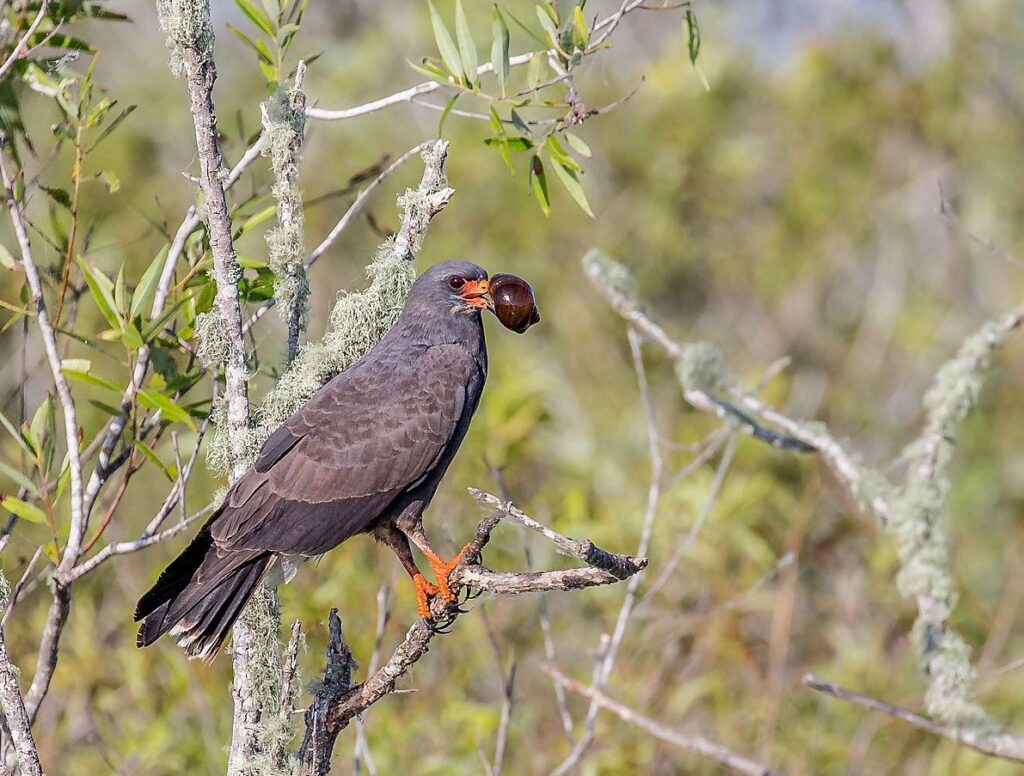
When it’s a matter of life and death, evolve quickly!
Read more at the University of Florida study: Bird evolves virtually overnight to keep up with invasive prey.
(photos from Wikimedia Commons; click on the captions to see the originals)
That is similar to evolutionary biologist Stephen Gould’s concept of punctuated equilibrium. ie. Evolution is not always a slow process.